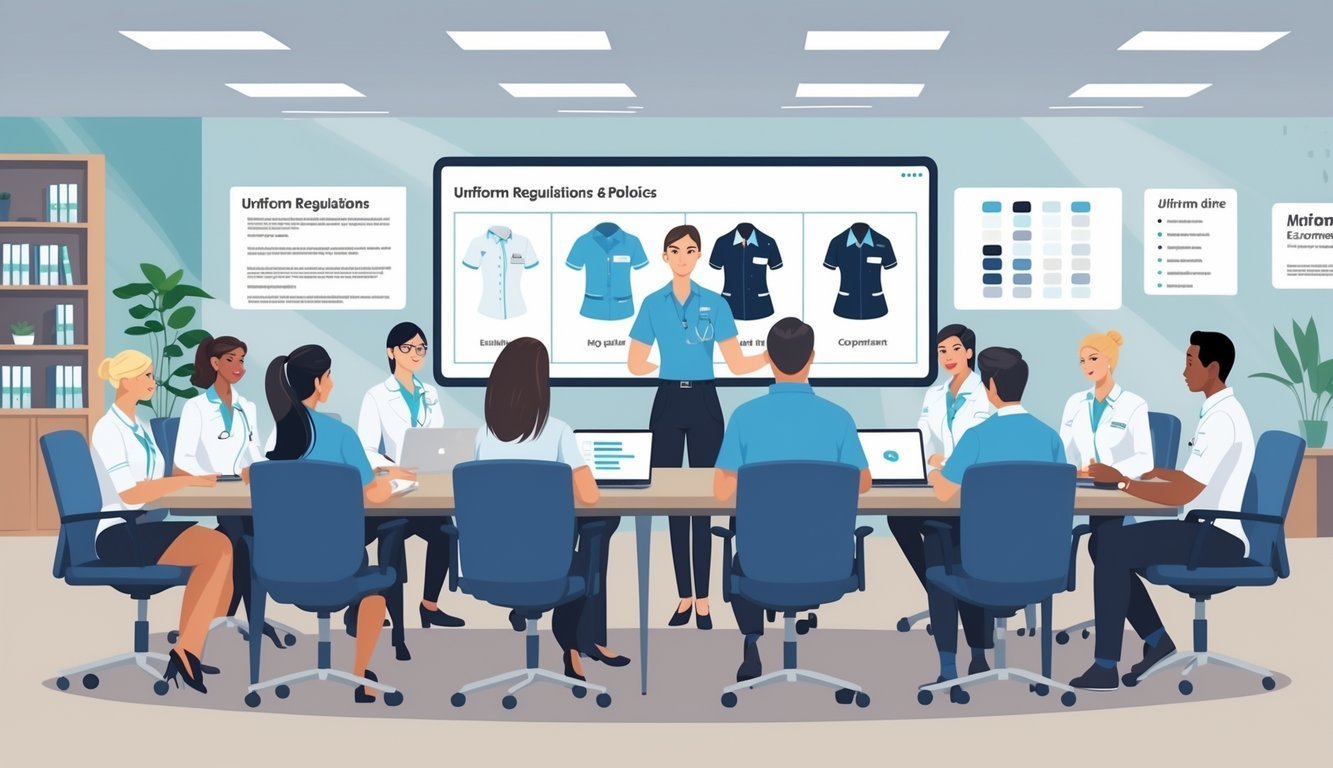PsychNewsDaily Publishers
100 Summit Drive
Burlington, MA, 01803
Telephone: (320) 349-2484
PsychNewsDaily Publishers
100 Summit Drive
Burlington, MA, 01803
Telephone: (320) 349-2484
Uniform regulations ensure professionalism, safety, and unity, outlining appearance standards, grooming requirements, and enforcement procedures to maintain consistency across military and uniformed services.

Uniform regulations and policies set the ground rules for how you should wear and care for your uniform. They keep things straightforward, making sure everyone’s on the same page about professionalism, unity, and safety—especially in places like the military.
These rules spell out everything from what your uniform should look like to when and where you’re supposed to wear it.
If you actually understand these policies, you’ll respect why they exist and steer clear of mistakes that could get you in trouble or just make things awkward. Whether you’re in the armed forces or another uniformed job, knowing the basics helps you feel more confident about what’s expected.
The guidelines also lay out who’s in charge of enforcing the rules and how they do it. Getting a handle on these policies can honestly save you headaches and help you look the part.

Uniform regulations tell you exactly how to wear your uniform so you look professional and put-together. They also cover who gets to set the standards, what goes into your uniform, and how you should handle grooming.
Official Navy policy documents spell out your uniform regulations. The Navy Uniform Matters Office writes and interprets these policies, making sure every sailor sticks to the Navy Uniform Regulations.
The prescribing authority decides what’s okay to wear and what isn’t. They tweak the rules as uniforms or the Navy’s needs change.
This keeps your uniform both practical and consistent. You’ll need to follow the official guidelines to avoid trouble and keep things looking sharp, whether you’re on duty or at a formal event.
The Navy uniform uses specific parts—jackets, trousers, insignia, and approved fabrics. Every bit of it has to meet set standards for standardization.
You’ll get clear instructions on what to wear based on your job and rank. This includes which badges or ribbons you can show off, depending on your achievements.
Standardization makes it easy for everyone to spot your rank and role. Plus, it keeps the whole Navy looking neat and, well, uniform.
| Component | Description | Example |
|---|---|---|
| Jacket | Official outerwear | Service dress blue jacket |
| Insignia | Rank and specialty badges | Rank stripes and warfare pins |
| Authorized Fabrics | Approved materials for durability | Wool blend for dress uniforms |
Grooming is a big part of the uniform policy to keep you looking sharp. This covers things like haircuts, facial hair, and overall personal hygiene.
The Navy has pretty specific rules about hair—length, style, and cleanliness all matter. Your hair needs to be well-groomed and shouldn’t mess with your uniform.
Facial hair? There are strict guidelines. Beards usually aren’t allowed unless there’s a medical or religious reason. Looking sharp isn’t just about the clothes—it’s about discipline, too. discipline
If you stick to these grooming standards, you’ll look disciplined and professional, just like the Navy expects.

Uniform rules don’t work unless people actually follow them. You need to know who checks compliance, what kind of uniform allowance you might get, and how the Navy updates these rules.
You and your supervisors both help enforce uniform rules. Navy leadership—officers and enlisted alike—make sure everyone’s got the right uniform on and wears it correctly.
Supervisors check uniforms regularly and report any issues to the Navy Uniform Matters Office or N1 if they need advice.
The Secretary of Defense and Vice Adm. John B. Nowell Jr. set the main enforcement policies, and Navy leadership follows their lead. Fleet commanders pitch in by making sure sailors know the rules and handle violations fairly.
When everyone keeps uniforms up to standard, it builds pride and professionalism across the fleet.
You might get an allowance to help cover uniform costs. The Navy usually offers cash allowances or gives you uniforms directly, with yearly limits—often around $800.
Some jobs, like uniformed police or firefighters in the Department of Defense, get higher rates—up to $1600 or $1800—since their uniforms take more of a beating.
Here’s a quick breakdown:
| Role | Max Annual Allowance |
|---|---|
| General Navy Personnel | $800 |
| DoD Firefighters | $1600 |
| DoD Uniformed Police | $1800 |
These allowances let you replace worn or damaged uniform items without spending your own money.
Your feedback actually shapes uniform policy. The Navy Uniform Matters Office listens to sailors and uses that input to improve rules and allowances.
You can suggest changes through your supervisors or during fleet feedback sessions.
Navy leadership and N1 review policies regularly to keep up with new needs or tech. Updates come from the top and get approved by higher-ups like the Secretary of Defense.
This keeps uniform rules practical and fair for everyone.

You’ll find official Navy uniform rules and updates on specific channels and official sites. It helps to know who’s in charge of these rules so you can stay up to date.
Different standards apply depending on your job and which uniform you’re wearing.
Check MyNavyHR—the official Navy personnel website—for the latest uniform changes. They keep it updated.
You can also check out forums like “Ask the Chiefs” to get real feedback and advice from others in the fleet.
You’ll find the latest Navy uniform regulations on MyNavyHR. Head to the Uniforms section or the references page to grab the PDF files.
Female personnel follow specific rules for uniform fit, grooming, and accessories. These standards keep things consistent while allowing for different needs.
The Navy’s leadership and MyNavyHR handle creating and updating uniform policies. They send out official guidance to keep standards the same across the fleet.
Coveralls, or NWUs (Navy Working Uniforms), work for daily duties and certain jobs. You shouldn’t wear them to formal events, but they’re fine for most work settings.
Yes, male sailors have to stick to certain rules when wearing the NSU. They need to make sure insignias are in the right spots and follow the Navy’s grooming standards.
The Navy also tells them when they should wear the NSU instead of other uniforms. It’s not really up for debate—these guidelines are pretty clear.